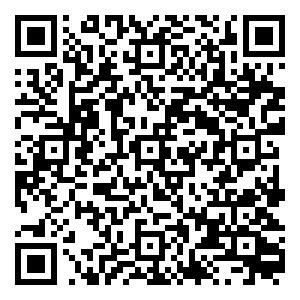Experimental and Theoretical Study of the Equivalent Stiffness Model of Aluminium Alloy Temcor Joints
-
摘要: 作为铝合金单层网壳最常用的节点形式,铝合金板式节点主要承受轴力和弯矩的作用。现有的研究成果主要集中于该节点在弯矩和轴力单独作用下的刚度模型,并没有模型可以模拟该节点在弯矩和轴力共同作用下的刚度特征。为此通过试验探索、数值分析及理论研究来解决该问题,提出可以同时考虑弯矩和轴力作用的板式节点等效刚度模型。首先开展铝合金板式节点的抗弯及抗压试验,初步探明节点在弯矩和轴压力单独作用下的变形机理。试验结果表明,板式节点的轴向变形和弯曲变形分为4个阶段:螺栓固定阶段、螺栓滑移阶段、孔壁承载阶段和破坏阶段。在试验的基础上建立数值分析模型,对板式节点在弯矩和轴力共同作用下(偏心力)的变形机理开展研究。数值分析结果表明在偏心力作用下轴向的变形机理为:1)随着偏心距的增加,等效刚度逐渐减小;2)当偏心率小时,滑移阶段可能发生2次。在偏心力作用下弯曲的变形特征为:1)当偏心率小时,出现反复滑移现象;2)当偏心距较小时,轴向力可以提高弯曲刚度,但随着偏心距的增大,轴向作用力可以降低弯曲刚度。在铝合金单层网壳中,不同位置的板式节点的偏心距完全不同,进而无法精确计算每个关节的刚度模型。为便于计算和使用,可采用等效梁模拟法,根据轴向变形、弯曲变形和屈服载荷相等的原则,对铝合金板式节点的等效刚度模型开展理论推导,获得了该节点等效两单元各参数的计算公式。建立验证所需的板式节点数值分析模型及对应的等效刚度模型,对比了二者的轴向和弯曲的荷载-位移曲线。结果表明,等效梁单元模型的轴向变形和弯曲变形与板式节点基本相同。因此,所提出的Temcor节点等效模型是准确的,可用于单层网壳的稳定性分析。Abstract: As the most common joint form of aluminum alloy single-layer latticed shells,aluminum alloy plate joints mainly bear the action of axial force and bending moment.The existing research results mainly focus on the stiffness model of the joint under the action of bending moment and axial force alone,and no model can simulate the stiffness characteristics of the joint under the action of bending moment and axial force.This paper will solve this problem through experimental exploration,numerical analysis and theoretical research,and propose an equivalent stiffness model that can consider both the bending moment and the axial force of the plate joint.Firstly,the bending and compression tests of aluminum alloy plate joints are carried out to preliminarily explore the deformation mechanism of joints under the action of bending moment and axial pressure alone.The test results show that the axial deformation and bending deformation of plate joints can be divided into four stages:bolt fixation stage,bolt slip stage,hole wall bearing stage and failure stage.Based on the test,a numerical analysis model is established to study the deformation mechanism of plate joints under the combined action of bending moment and axial force (eccentric force).The numerical analysis results show that the axial deformation mechanism under eccentric force is:1) with the increase of eccentric distance,the equivalent stiffness decreases gradually;2) When the eccentricity is small,the slip stage may occur twice.The deformation characteristics of bending under eccentric force are as follows:1) When the eccentricity is small,repeated sliding occurs;2) When the eccentricity is small,the axial force can improve the bending stiffness,but with the increase of the eccentricity,the axial force can reduce the bending stiffness.In aluminum alloy single-layer latticed shells,the eccentricity of plate joints at different positions is completely different,so it is impossible to accurately calculate the stiffness model of each joint.In order to facilitate calculation and use,the equivalent beam method simulation method can be used.According to the principle of equal axial deformation,bending deformation and yield load,the equivalent stiffness model of aluminum alloy plate joint can be theoretically deduced,and the calculation formula of the parameters of the equivalent two elements of the joint can be obtained.Establish the numerical analysis model and corresponding equivalent stiffness model of plate joints required for verification,and compare the axial and bending load-displacement curves of the two.The results show that the axial deformation and bending deformation of the equivalent beam element model are basically the same as that of the plate joint.Therefore,the Temcor node equivalent model proposed in this paper is accurate and can be used for the stability analysis of single-layer latticed shells.
-
Key words:
- temcor joint /
- axial deformation /
- bending deformation /
- eccentric load /
- stiffness model
-
[1] Mazzolani F M. 3D aluminium structures[J]. Thin-Walled Structure, 2012,61:258-266. [2] Wang Y, Fan F, Lin S. Experimental investigation on the stability of aluminium alloy 6082 circular tubes in axial compression[J]. Thin-Walled Structure, 2015,89:54-66. [3] Xiong Z, Guo X N, Luo Y F, et al. Elastic-plastic stability of single-layer reticulated shells with aluminium alloy gusset joints[J]. Thin-Walled Structure, 2017,115:163-175. [4] Xiong Z, Guo X, Luo Y, et al. Experimental and numerical studies on single-layer reticulated shells with aluminium alloy gusset joints[J]. Thin-Walled Structures, 2017, 118:124-136. [5] Liu H B, Ding Y Z, Chen Z H. Static stability behavior of aluminum alloy single-layer spherical latticed shell structure with Temcor joints[J]. Thin-Walled Structures, 2017, 120:355-365. [6] Zhao C Q, Zheng W D, Ma J, et al. The stability of new single-layer combined lattice shell based on aluminum alloy honey- comb panels[J]. Applied Sciences, 2017(7):1-15. [7] Wang G, Zhao C, Gu Y, et al. The study on bending performance of aluminum alloy honeycomb panel-beam composite grid structure[J/OL]. Materials Research Express, 2020, 7(7)[2020-06-27]. https://doi.org/10.1088/2053-1591/aba817. [8] Guo X N, Xiong Z, Luo Y F, et al. Experimental investigation on the semi-rigid behaviour of aluminium alloy gusset joints[J]. Thin-Walled Structures, 2015, 87:30-40. [9] Guo X N,Zhu S,Liu X, et al. Experimental study on hysteretic behavior of aluminum alloy gusset joints[J]. Thin-Walled Structures, 2018, 131(10):883-901. [10] Guo X N, Xiong Z, Luo Y F, et al. Application of the component method to aluminum alloy gusset joints[J]. Advances in Engineering Structures, 2015,18:1931-1946. [11] Xiong Z, Guo X N, Luo Y F, et al, Numerical analysis of aluminium alloy gusset joints subjected to bending moment and axial force[J]. Engineering Structures, 2017,152:1-13. [12] Shi M, Xiang P, Wu M. Experimental investigation on bending and shear performance of two-way aluminum alloy gusset joints[J]. Thin-Walled Structure, 2018,122:124-136. [13] Ma H H, Yu L W, Fan F, et al. Mechanical performance of an improved semi-rigid joint system under bending and axial forces for aluminum single-layer reticulated shells[J]. Thin-Walled Structure, 2019,142:322-339. [14] Wang G, Zhao C Q, Ma J. Experimental and numerical study on the bending performance of an aluminium alloy flower-gusset composite joint[J]. Structures, 2021, 33(4):2475-2486. [15] Wang G, Zhao C Q. Experimental and theoretical study on the bearing capacity of FGC joints for single-layer aluminium alloy lattice shell structures[J]. Structures, 2021, 33(4):2445-2458. [16] Zhu P H, Zhang Q L, Luo X Q, et al. Experimental and numerical studies on ductile-fracture-controlled ultimate resistance of bars in aluminum alloy gusset joints under monotonic tensile loading[J/OL]. Engineering Structures,2020, 204.[2020-01- 01]. https://doi.org/10.1016/j.engstruct.2019.109834. [17] Inspection and Quarantine of the People's Republic of China. Code for design of aluminium structures, general administration of quality supervision:GB/T 50429-2007[S]. Beijing:China Planning Press, 2007. (in Chinese) [18] Inspection and Quarantine of the People's Republic of China. Metallic materials-tensile testing-part 1:method of test at room temperature:GB/T 228. 1-2010[S]. Beijing:Standards Press of China, 2011. (in Chinese) -

 点击查看大图
点击查看大图
计量
- 文章访问数: 228
- HTML全文浏览量: 63
- PDF下载量: 15
- 被引次数: 0




 登录
登录 注册
注册


 下载:
下载:

